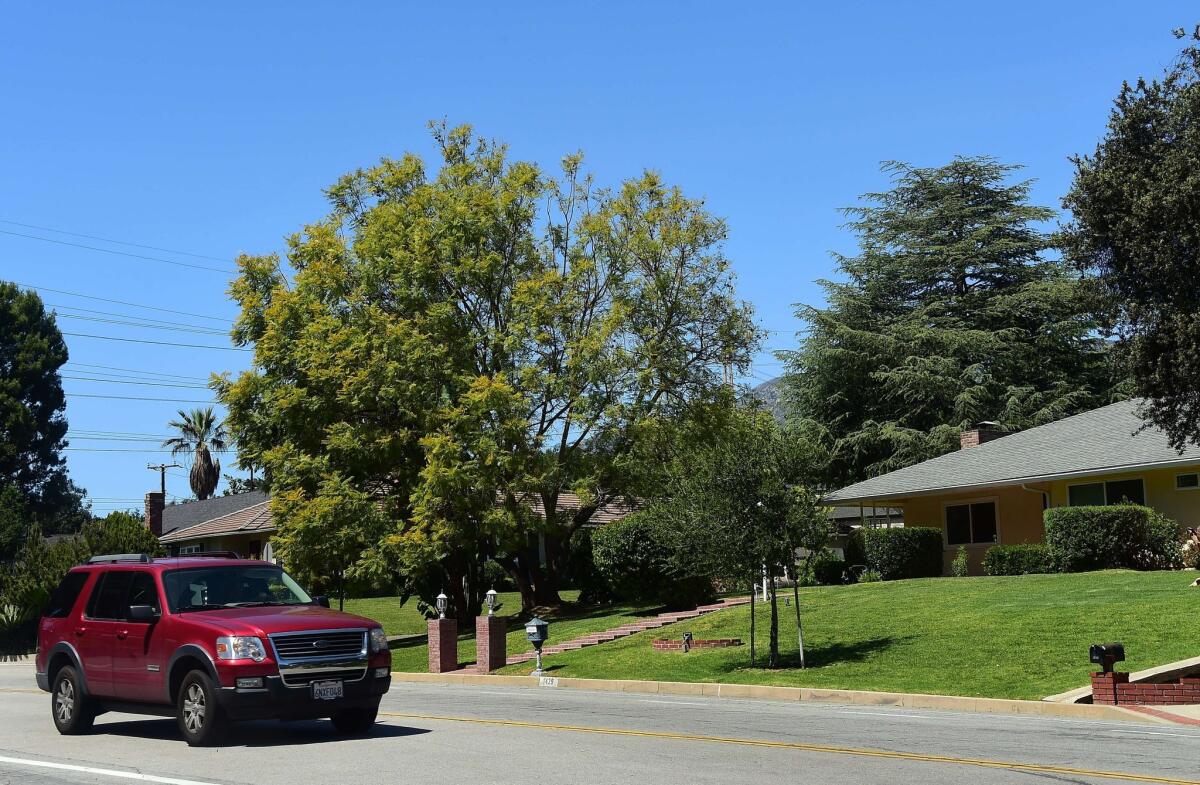L.A. saving water but still has a long way to go

- Share via
Los Angeles residents and city leaders express pride in the significant cuts in water use they have made. Per capita water demand dropped countywide about 16% between 2000 and 2013.
But a new UCLA study found that L.A. County still has a long way to go.
Water use increased between 2011 and 2013, according to research.
Researchers found that the county’s potable water use — an average of about 139 gallons per person per day in 2013 — is still almost twice as high as the average European city.
The UCLA study did not measure 2014 water use. The city says residents used 131 gallons of drinkable water per capita per day as of June 2014.
UCLA’s Institute of the Environment and Sustainability gave Los Angeles County a ‘C’ for its management of water supply and water quality. The institute published its first-ever comprehensive environmental report card, which analyzed six categories, among them water, air and energy. The findings paint a picture of the county’s water situation amid California’s historic drought.
“We import too much water from too far away and our groundwater quality and surface water quality is generally very poor,” said Mark Gold, the study leader. “But the future looks bright because there’s a concerted focus on increasing local water supplies.”
Researchers released the study the same week that Mayor Eric Garcetti issued a broad outline of his vision for the city’s environment, including water-related strategies, initiatives and goals.
The two reports give Southland residents a sense of where they stand as they prepare for mandatory water-use cuts Gov. Jerry Brown ordered this month, a first in California history.
Q: How does Angelenos’ water usage compare to other places?
A: State water officials often cite Australia when discussing California’s drought and how to cope with it. Drought afflicted that country for a decade and a half, and in response residents cut their use to about 38 gallons per person per day. Amsterdam, which ranked atop a 2009 “European Green City Index” for its water use and policy, uses a similar amount, according to the index. Experts caution, though, that European cities tend to be denser with higher rainfall than L.A. or much of California.
The European index said that nearly a quarter of the water consumed by cities is lost to leaks. California water agencies report leak rates closer to 10%. The Los Angeles Department of Water and Power says its leak rate is almost half the industry average.
Q: Where does L.A.’s water come from?
A: About 58% of the water used in L.A. County comes from outside the region. Most of it travels south from the Bay-Delta via the State Water Project or west from the Colorado River and is supplied by the Metropolitan Water District of Southern California. The water wholesaler is expected to vote this week to ration supplies to the 26 cities and water districts it serves, including the DWP. That means the local districts could charge much steeper rates for any water bought in excess of rationed amounts.
A relatively small fraction of L.A. County water — about 5% — comes from the Owens Valley via the Los Angeles Aqueduct.
Less than half of the county’s water is obtained locally. About 38% comes from groundwater sources, and local recycled water contributes about 4%.
Garcetti’s “pLAn” for the city of Los Angeles calls for the Department of Water and Power to slash purchases of imported water in half by 2025 and obtain 50% of its water locally by 2035.
Q: What are water-use goals for the region, and will we meet them?
A: In the city of Los Angeles, Garcetti wants a 20% reduction from 2014 rates of per capita water use by 2017 and 25% by 2035. Water officials have said that if current water savings continue this summer, L.A. residents will be using about 10% less water per capita than in early 2014. Officials from the mayor’s office have said they believe the city is on track to meet Garcetti’s goals.
Separately, the state has outlined a proposed framework to meet Brown’s goal of a 25% reduction in urban water use statewide. It calls for the DWP to cut overall water production by 20% over the next year. Under preliminary plans released last week, the state would measure the conservation efforts against water usage rates in 2013.
Q: What can I do to help?
A: The UCLA report offers three recommendations specific to water: Cut shower time by five minutes, replace grass with native vegetation and switch to ultra-low-water-use toilets.
More to Read
Sign up for Essential California
The most important California stories and recommendations in your inbox every morning.
You may occasionally receive promotional content from the Los Angeles Times.














